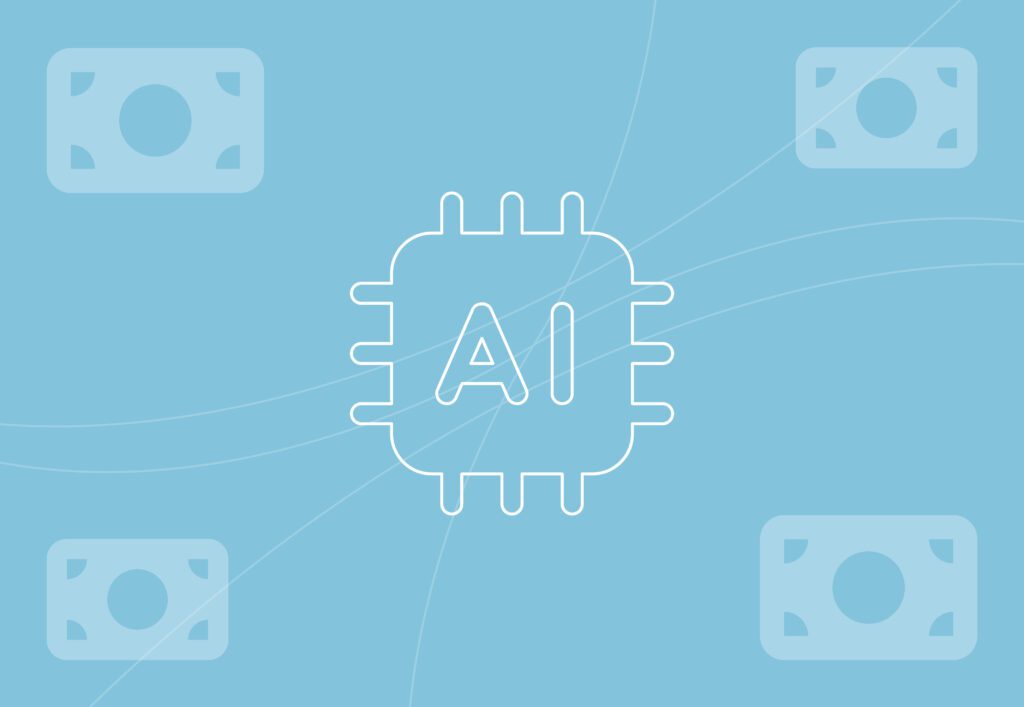
Leveraging AI in PPC to maximise performance

Artificial Intelligence (AI) is no longer just a buzzword marketeers use, it has quickly transformed into a central part of PPC allowing smart marketers to run and scale their Google Ads campaigns faster and more efficiently. As Google Ads continues to evolve and grow, AI is playing a central role in its future, influencing how campaigns are managed, optimised and scaled. From smart bid strategies, creative generation and predictive targeting, AI helps marketers make faster, smarter decisions that are informed by massive amounts of data and datapoints.
However, AI isn’t a one stop solution that will generate performance on its own. Success depends on using it effectively, understanding its strengths and limitations and when to use it. In this blog we’ll explore practical ways to leverage AI across your Google Ads strategy as well as the do’s and don’ts of effective AI usage.
How AI is revolutionising Google Ads
AI has quickly become a staple in Google Ads management, historically campaign setups and strategy were about maximising the amount of control you have over the account utilising single keyword ad groups, manual bid inputs and granular campaign segmentation.
Today, AI has automated much of this manual work utilising historical data, real time user signals and predictive modelling to make smarter and faster decisions. Instead of reacting proactively to users’ searches, AI anticipates them. This allows campaigns to automatically adjust bids based on the likelihood of achieving your campaign goals, taking into account the users previous searches, time of day, location as well as many more data points.
Some key integrations of AI into Google Ads include
Smart Bidding: Bid strategies that use Google’s AI to optimise for conversions or conversion value in each and every auction. Smart Bidding leverages machine learning algorithms trained on vast amounts of data and signals to adjust bids in real time based on the likelihood of a conversion being achieved.
Responsive Search Ads (RSA’s): RSA’s allow you to enter up to 15 headlines and 4 descriptions, Google Ads will then test and rotate different combinations to find top-performing variants – using AI to match ad content to search terms, location and intent.
Performance Max Campaigns: A powerful AI driven campaign type that allows ads to serve across Google’s entire inventory. Google’s AI is used across bidding, budget optimisation, audiences, creatives, attribution and more.
Lookalike Audiences: Lookalike segments are groups of users that share characteristics and data points with a first party data ‘seed list’ – usually a customer match list of previous converters. This data is then used by Google’s AI to find other potential customers that share similar characteristics.
Top ways to use AI in Google Ads campaigns
Now you know how AI is integrated into the core of Google Ads, we’ll discuss practical and strategic ways to leverage it both within the platform and using external tools. It’s important to note that AI won’t magically solve all your PPC problems and allow you to become hands off, human oversight is important and quality checking the output and performance of your campaigns is key.
Smart bidding strategies
As discussed previously, smart bidding strategies are a powerful tool to help you achieve your campaign goals taking the manual task of setting bids out of your hands. Smart bidding is either aimed at maximising conversion value or maximising the volume of conversions, this can then be combined with a target CPA or target ROAS to guide the strategy on the performance you are aiming for.
Firstly, when using smart bidding strategies, you must ensure that your conversion tracking is accurate and that your primary conversion goals are aligned with your actual business goals. Although vanity conversion metrics like page views will see your CPA look incredible and your conversion volume skyrocket, it’s unlikely to result in any real value being generated by the business. As a general rule of thumb, you want to be looking at lead form conversions for a lead gen business and purchases for any e-commerce activity.
Secondly, the more data you provide a smart bid strategy the more informed, accurate and effective its outputs are going to be. Over-segmented, granular account types will starve bid strategies of data and lead to poor performance. Therefore, your campaign structure should be consolidated and simplified. This will allow the AI to learn faster, improve performance and make the account easier to manage.
Responsive search ads
With Google phasing out expanded text ads (ETAs) back in 2022, responsive search ads are now your only choice for a search campaign. However, with the powerful AI features built into them, they should be seen as an upgrade to ETA’s.
During the setup process of RSA’s, Google will likely suggest potential ad copy for you based on keywords and other account data. If using them, make sure to always sense check the output and whether it will actually resonate with your audience. Our recommendation would be to always input your own ad copy here, thinking about who your ads are for, the USP’s of your business, the value your service/product provides or problems it solves. Once you’ve got a good variety of messaging (utilising all headlines and descriptions available as best practice) you can then allow AI to take over finding the winning combination for each user.
If you’re then testing multiple ads within an ad group to see the impact of offer messaging, tone of voice or other factors make sure to toggle the ad rotation setting at campaign level to “optimise:best performing ads”. This will ensure that top performers are optimised towards and the budget is not split 50/50 between your different ads.
Performance Max campaigns
Performance max campaigns are a fully AI driven campaign type and can be important in unlocking growth for your Google Ads account outside of bottom funnel search. AI will handle asset placement, bidding and targeting but will provide a limited amount of insight into how individual placements and assets are performing and where your actual performance is being driven.
Performance max can be leveraged for both ecommerce and lead gen accounts with the ability to use a product feed within the campaign to serve shopping ads.
With targeting being driven by AI it’s fundamental that you provide the campaign with high quality first party data to feed it. The use of customer match lists for converters, high value converters and other audiences will push the algorithm in the right direction and play a big part in your campaign performance.
We can’t mention performance max without talking about branded traffic, with the AI attempting to achieve your goals it will naturally prefer warm branded traffic that will provide low CPA’s and high ROAS. This can lead to inflated brand cpc’s with you paying more for branded traffic that can be acquired through organic or a carefully controlled standard search campaign. Although historically there were limited features to prevent this, Google has been steadily bringing out manual controls that allow marketers to refine targeting through Performance Max. Make use of brand exclusions to prevent brand bidding altogether as well as newer features such as “allow shopping ads”, this will prevent search ads showing for branded terms through the campaign but still allow shopping carousel ads to show.
Ad copy ideation with third-party AI Tools
Creating compelling ad copy is one of the most critical and time consuming parts of running successful Google Ads campaigns. Not only do they directly impact the volume of traffic that you can generate through your campaign, but CTR’s and ad rank are factored into your CPC costs. If you have engaging ad copy that resonates with your audience and is relevant to the users search terms not only will you generate more traffic but you’ll also pay less for it.
Platforms like ChatGPT and Jasper can generate headlines and descriptions in seconds and with the use of custom GPT’s can come preloaded with prompts to ensure the ads generated use best practice. These tools are useful for generating copy for different audience segments, allowing you to test variations of copy with different tones of voice, benefits and calls to action.
When doing so, don’t copy and paste the outputs from them. The tools should be seen as a way to brainstorm potential ad copy and provide inspiration for you to build upon. The human touch and oversight here is essential, you understand your audience better, what will resonate with them as well as your brand voice. Furthermore you must ensure that your copy complies with ad policies and speaks authentically to your audience.
Keyword Research Using AI
Effective keyword research is the foundation of a successful Google Ads campaign and AI can be used to assist and expedite the process. Tools like ChatGPT and even Google’s keyword planner can be used to offer intelligent keyword suggestions and cluster them into themed segments and groupings.
Again, your oversight is essential here AI can misinterpret intent, doesn’t understand brand voice or policy restrictions and runs the risk of keyword stuffing with overly broad targeting.
Therefore, you should never rely blindly on AI generated lists, review every keyword to ensure it’s relevant and of the correct intent and manually review any suggested themes/groupings based on your own expertise and experience.
Similar to ad copy generation, AI is a brainstorming tool here and not the final word.
Do’s and don’ts of using AI in Google Ads
AI can be a game-changer in PPC and Google Ads management, but only when leveraged correctly. Automation doesn’t mean you can set and forget campaigns, and human oversight and strategy is fundamental in applying AI correctly.
Here are the top dos and don’ts when using AI in PPC.
Do’s
Train AI with a high volume of high-quality data.
AI is only as good as the data it’s trained on, ensure your account structure is consolidated and well structured, conversion tracking is accurate and also relevant to your business goals.
Keep a close eye on performance and outputs.
Don’t neglect human oversight; monitor all aspects of your campaigns to ensure AI is producing the right results and is aligned with your business goals.
Use AI for iteration
Leverage generative AI to generate new ideas, ad variations and keyword themes. Then review them, build upon them and refine them before testing.
Utilise scripts to provide insight into performance max data.
Scripts are useful in pulling data to show where performance is actually being driven within your campaigns, this is especially useful for performance max campaigns where this data isn’t always available in platform. There are hundreds of scripts out there but as a starting point we would suggest Mike Rhodes Pmax network script which allows you to see spend, conversions and revenue by network.
Don’ts
Don’t set and forget
AI is powerful but your job as a marketer is to oversee it, guide it and apply it correctly. Regularly check outputs, review reports and analyse performance to ensure campaigns are driving performance and decisions align with business goals.
Don’t use irrelevant conversion goals.
Ensure your conversion goals are relevant to your business goals and will drive real value for your business. Use purchases or lead form submissions and stay away from softer goals such as page views or form opens.
Don’t ignore negative keywords and exclusions
AI can be known to bid on irrelevant or low intent queries, especially when using broad match and smart bidding. Review search queries regularly, applying negative keywords where appropriate to guide and place restrictions on the AI.
Don’t expect instant results
AI requires a learning period, especially when launching a new performance max campaign or applying a fresh bid strategy without historic data. Although initial performance may be below your benchmarks, campaigns typically take 1-2 weeks to learn and stabilise as they gather data to make increasingly better informed decisions.
Conclusion
AI provides a tool for smarter and faster Google Ads management. From integrated features, including performance max campaigns and smart bid strategies to third-party generative AI tools. AI offers powerful advantages that can help you free up time to focus on strategy and oversight.
As we’ve discussed throughout this guide, AI is a tool, not a solution. Its value comes from how you use it, monitor it and guide it – the quality and quantity of your inputs and the clarity of your goals. The best use of AI is when combined with human insight and oversight.
Never rely solely on AI outputs or suggestion,s and don’t set and forget campaigns. With the right balance of automation and oversight, AI will help drive improved performance from your PPC efforts.


